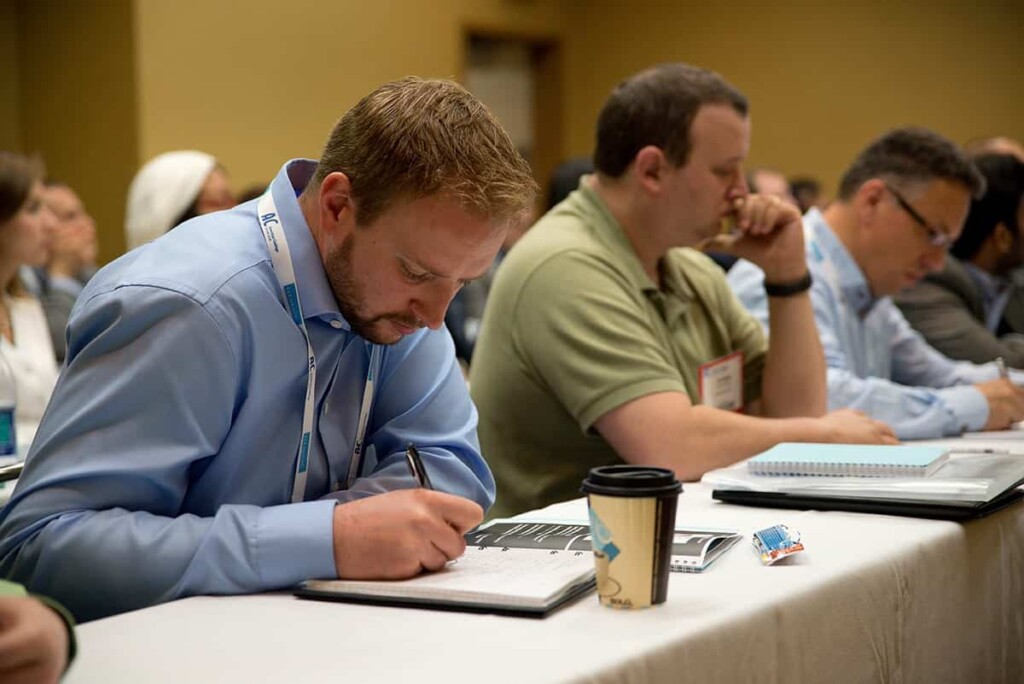Need a refresher on important coatings topics—or are you interested in learning more about new technology? Prior to the opening of the American Coatings Conference (ACC), leading coatings experts will offer half-day Pre-Conference Tutorials. To be held on Monday, April 9, topics of these exclusive short courses and instructors include:
Tutorial 1—Rheology—Gina Paroline, Anton Paar
This tutorial is aimed at those new to the subject of rheology, or those who have used or are using rheology, and would like a refresher or to learn more. Participants will develop an understanding of basic rheology theory, be able to design meaningful experiments to characterize sample products, recognize and mitigate potential problems and pitfalls encountered during measurements, and interpret rheological data.
Tutorial 2—Easy-to-Clean Coatings—W. Marshall Ming, Georgia Southern University
Discussed and put forward in a variety of applications—including exterior and interior architectural coatings, industrial coatings and even automotive coatings—effective and lasting easy-cleanability and self-cleanability of surfaces is quite high on the wish-list of coatings functionality. This tutorial will explain the different concepts that are put to work in such coatings and review the state-of-the-art systems in practice.
Tutorial 3—Anticorrosive Coatings—Brian Skerry, The Sherwin-Williams Company
What principles govern the corrosion of metals, and how can protective coatings help in preventing corrosion? This tutorial will review the fundamentals of electrochemical processes, and typical ingredients and formulation characteristics of anticorrosive coatings will be outlined and discussed.
Tutorial 4—Waterborne High-Performance Coatings—Ivan Tyre, Alberdingk Boley and Timothy December, BASF
Waterborne coating is a fast-developing technology. In many applications, these systems have become a standard solution, replacing their solventborne counterparts. In some important clearcoat or topcoat applications, however, solventborne systems remain the preferred technology. This tutorial aims to discuss what is possible today with waterborne clearcoats for different substrates—including wood and metal—and what is not. It covers the theory behind different binder technologies, as well as fundamental aspects of the film formation process and the performance of these coatings systems. This tutorial will also cover some fundamental aspects of rheology for waterborne applications.
Tutorial 5—Radiation Curing—Jeffrey Klang, Sartomer
Radiation curing is an enabling technology for the coatings, inks, adhesives, electronics and other industries. UV and EB (electron beam) curing processes continue to be adopted at an increasing rate because of advantages in productivity, energy consumption, VOC emissions and final product performance. The tutorial will offer an introduction to radiation curing technology and its main end-uses with an emphasis on coatings applications. The basics of formulating, equipment choice, the relationship between equipment and chemistry and the effects on-end product performance will be discussed. Current trends in the industry and emerging applications for radiation curing will also be reviewed.
Tutorial 6—Polyurethanes—Mike Jeffries, Covestro
Their chemistry is very versatile, as is their application and application potential. Polyurethane (PUR) coatings and their typical components—polyisocyanates and polyols—will be reviewed and compared in this tutorial. This includes a discussion of the various PUR coatings technologies in use and their advantages and limitations, such as 1K and 2K solventborne, as well as waterborne chemistries, radiation curing PUR coatings and PUR powder coatings formulations, and their typical end-use applications.
Tutorial 7—Biocide Selection Process for Coatings—Beth Ann Browne, Ph.D., The Dow Chemical Company
Prevention of microbial contamination in the wet-state and microbial defacement of the dry-film are critical objectives for coatings manufacturers. Biocide selection is complex, and formulators need to consider global regulatory status, sustainability concerns and impact on paint properties, in addition to antimicrobial efficacy spectra including resilient micro-organisms that thrive in manufacturing facilities. This tutorial will guide participants through the biocide selection process. Topics will include: in-can preservation (including a bacteriology overview, detecting and enumerating contaminants, and in-can test methodologies), dry-film protection (including fungal overview, dry-film defacement, and test methods), biocidal chemistry overview, and regulatory overview. Microbial audits of manufacturing facilities and industrial hygiene will also be discussed.
Tutorial 8—Functional Films—James Rawlins, University of Southern Mississippi
The most recent emerging technologies that provide a basis for the development of smart coatings will be reviewed. A brief discussion of smart polymers and coatings, governing principles, types and examples of smart coatings, necessary raw materials, approaches for their preparation, their unique properties, applications and markets will be presented.
Tutorial 9—Titanium Dioxide—Michael Diebold, Chemours
Coatings formulators are increasingly interested in finding ways to use less TiO2 without compromising opacity performance. This tutorial covers TiO2 light scattering fundamentals and then uses this knowledge to provide practical advice and strategies to maximize TiO2 efficiency. In addition, alternative technologies for paint opacity will be discussed.
Tutorial 10—Sustainable Coatings and Processes—Jamil Baghdachi, Coatings Research Institute, Eastern Michigan University
A sense of urgency is driving the frenzy of activity on both research and development of sustainable raw materials, coatings, processes and applications. As we project into the future, there are growing concerns regarding how to address the two seemingly opposing issues of economy and sustainability. This tutorial aims to discuss the efforts that are being taken to reach the goal of Sustainable Technologies without compromise. In addition, materials from renewable resources, energy efficient processes, new raw materials, and streamlined formulations will also be discussed.
The Pre-Conference Tutorials and the ACC are two individual events and separate registration is required. For more information, visit www.american-coatings-show.com.
